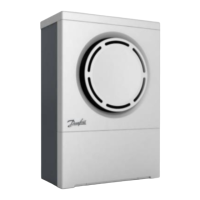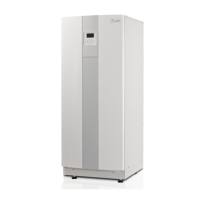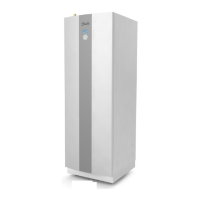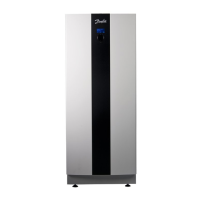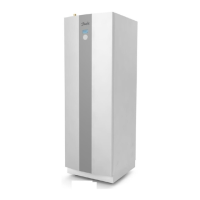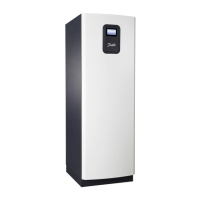Cause Troubleshooting Remedy
6. The low pressure pressure switch opens
too soon.
•Incorrectpressureswitchinstalled.Higher
break pressure than intended. See marking.
•Pressureswitchfault,opensatahigherpres-
sure than indicated (mark pressure). Check using
the manometer apparatus.
•Defectivepressureswitch,alwaysopen.
If the low pressure pressure switch opens
too soon or is always open, replace it.
7. Incorrect type of anti-freeze, must be in
accordance with instructions.
Check that the correct type of anti-freeze is used. If the incorrect type of anti-freeze is used,
the entire system must be drained and
refilled with a new mixture.
8. Incorrect mix of anti-freeze, the concentra-
tion must be in accordance with instructions.
Check the freezing point of the mix using a
refractometer.
If the mixture is not in accordance with
the instructions, it must be remixed in
an external container. This is because the
fluids do not mix with each other well if
one is filled directly into the system.
9. Short active collector, e.g. short or dry bore
hole, short surface soil collector.
•Checkthelengthofthecollectorthatisbeing
used and compare with the collector length in
the dimensioning documentation.
•Inaddition,checkthatthecollectorisnotsus-
pended ”in free air” if boreholes are used.
If the active collector is too short, the
heat pump cannot receive enough ener-
gy from the heat source, which results
in it requiring an addition to cover the
energy requirement.
10. Collector too long, pressure drop too
great.
Check the length of the collector that is being
used and that it is connected in parallel (not
connected in series) if more than 1 coil is being
used.
If a longer collector is being used than
recommended for the specific heat
pump, it must be divided on several par-
allel connected coils.
11. Expansion valve defective or incorrectly
set.
Using manometer apparatus and thermometer
check what the overheating reading of the unit
is.
Also check that bulb and capillary tube are
undamaged and that the bulb is correctly
installed.
If the overheating reading does not cor-
respond with the instructions for the
specific refrigerant, adjust the expansion
valve until the correct value is obtained.
See separate instructions for cooling
techniques.
If overheating cannot be adjusted with
the expansion valve or if the capillary
tube/bulb is damaged, replace it.
12. Lack of refrigerant, not enough refriger-
ant in the system.
Using manometer apparatus and thermometer,
check that the unit’s overheating is correct for
the specific refrigerant.
Follow the correct procedure (depending
on type of refrigerant) to add the correct
amount of refrigerant.
If there appears to be a leak in the refrig-
erant circuit, carry out leak tracing and
any necessary corrective action.
13. Drying filter blockage. Check the temperature difference above the dry-
ing filter. A one degree difference is permissible.
If the difference is greater than 1 degree, the fil-
ter is blocked. Take a reading during operation.
If the drying filter is blocked, replace it.
14. Blocked evaporator on the water side. If there is no strainer in the brine circuit, there
is a risk of dirt sticking in the evaporator and
blocking it. Unfortunately there is no easy way of
checking if the evaporator is blocked.
You can carry out a test by allowing the com-
pressor and circulation pumps to remain in oper-
ation. Check that the circulation pumps work
(for circ.pumps with a venting screw, unscrew it
and feel if the pump rotor rotates using a screw-
driver).
Then read the temperature on both connection
pipes to the evaporator:
If the temperature difference is <1°C, the evapo-
rator is probably blocked.
If the temperature difference is 2-6°C, it is prob-
ably not blocked.
If the temperature difference is >6°C, the evapo-
rator is probably blocked.
If the evaporator is thought to be
blocked, try flushing it. If this does not
work, it must be replaced
15. Blocked evaporator on the refrigerant
side.
Using manometer apparatus and thermometer,
check that the unit’s overheating is correct for
the specific refrigerant.
If the evaporator is thought to be
blocked by oil for example, try blowing
nitrogen through it to release the oil. If
this does not work, it must be replaced

